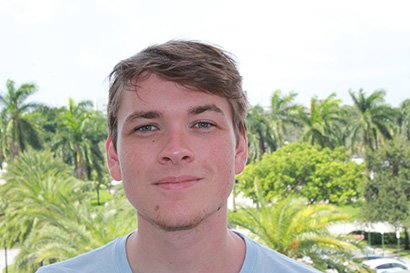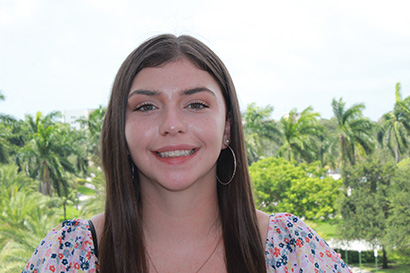Infrastructure Systems
Smart and Resilient Energy Systems
REU Mentor: Yufei Tang, Ph.D.
REU Scholar: Christopher Snook
REU Scholar Home Institution: Whitman College
Project: Inverse Design of Wave Energy Converter Using Artificial Intelligence
PROJECT
The purpose of this project is to apply inverse design techniques to mechanical engineering applications. Inverse design using AI has been applied previously with photonic materials, however its use in designing mechanical systems is new. If inverse design is shown to be something that is viable, then the efficiency of the design process for mechanical systems can potentially be dramatically increased.
One of the most difficult things to do when working with artificial intelligence is gathering an initial data set. This along with relevance to other REU projects, is why wave energy converters were chosen as the mechanical system. Data was gathered in a third party simulation software, then was used to train a machine learning model. This machine learning model was then manipulated and re-trained so that a path could be traced backwards from output to input while still retaining accuracy. This manipulation is what makes it possible to use the model for inverse design.
Due to limited data, this project is a proof of concept. The practical applications of this specific machine learning model are limited to optimizing a few parameters in wave energy converters. However if a reliable way to obtain large amounts of data with varying physical parameters is available, then it would likely be possible to quickly acquire optimal physical properties of a mechanical system for a set of specific output parameters.
REU Mentor: Yufei Tang, Ph.D. & Yingqi Feng
REU Scholar: Lindsay Steis
REU Scholar Home Institution: Gannon University
Project: Deep Learning-Based Algal Bloom Prediction for Lake Okeechobee Using Multi-Source Data Fusion
PROJECT
Florida’s Inland Sea, or Lake Okeechobee, is a large, but shallow freshwater lake in South Florida that offers numerous economic and ecological advantages to Florida residents and visitors. However, there have been serious threats to Lake Okeechobee over the past decade known as harmful algal blooms (HABs). Though satellite sensors can collect remote sensing images of the lake, there is often missing information due to dead pixels, a cloudy environment, sun glint, or water turbidity. Discontinuous data will impact long-term training for the model, so another method of prediction can be used to combat the issue: a HAB prediction model using deep-learning methods and a multi-source dataset. A hybrid dataset composed of remote sensing data from satellites above Lake Okeechobee and simulated data from a hydrodynamic biological model was used to forecast future HABs. Extensive testing of the model performance on different datasets was necessary in order to understand the capability of future applications more accurately. The project involves the REU participant testing the performance for a single-day and a two-week window using a deep learning model called ConvLSTM NN for the hybrid dataset. Additional windows, such as fourteen days of input to predict two days and seven days of input to predict seven days, were tested in order to observe how altering and updating the prediction windows would impact the overall training and performance of the HAB prediction model. Overall, this project serves as another tool to help provide knowledge about when HABs will occur in Lake Okeechobee and presents a new application for predicting HABs in other vulnerable areas. Deep learning prediction modeling can be used for many other environmental applications and will substantially change how these issues are handled in the future.
Index Terms – Harmful Algal Blooms (HABs), Deep Learning, Prediction Modeling, Convolutional Long-Short Term Memory (ConvLSTM), Neural Network (NN)
Click here to watch video presentation
REU Scholar: Christopher Snook

